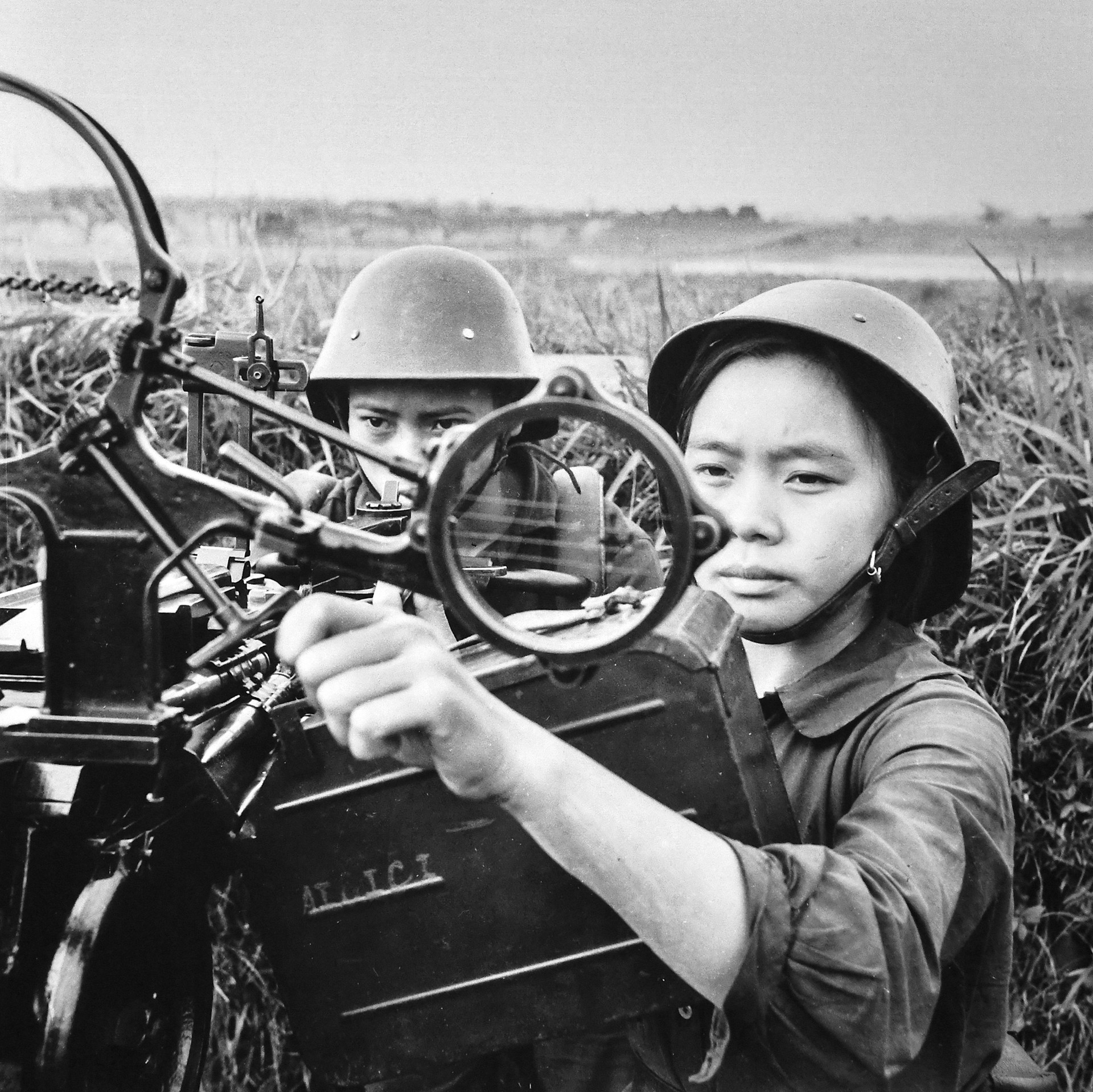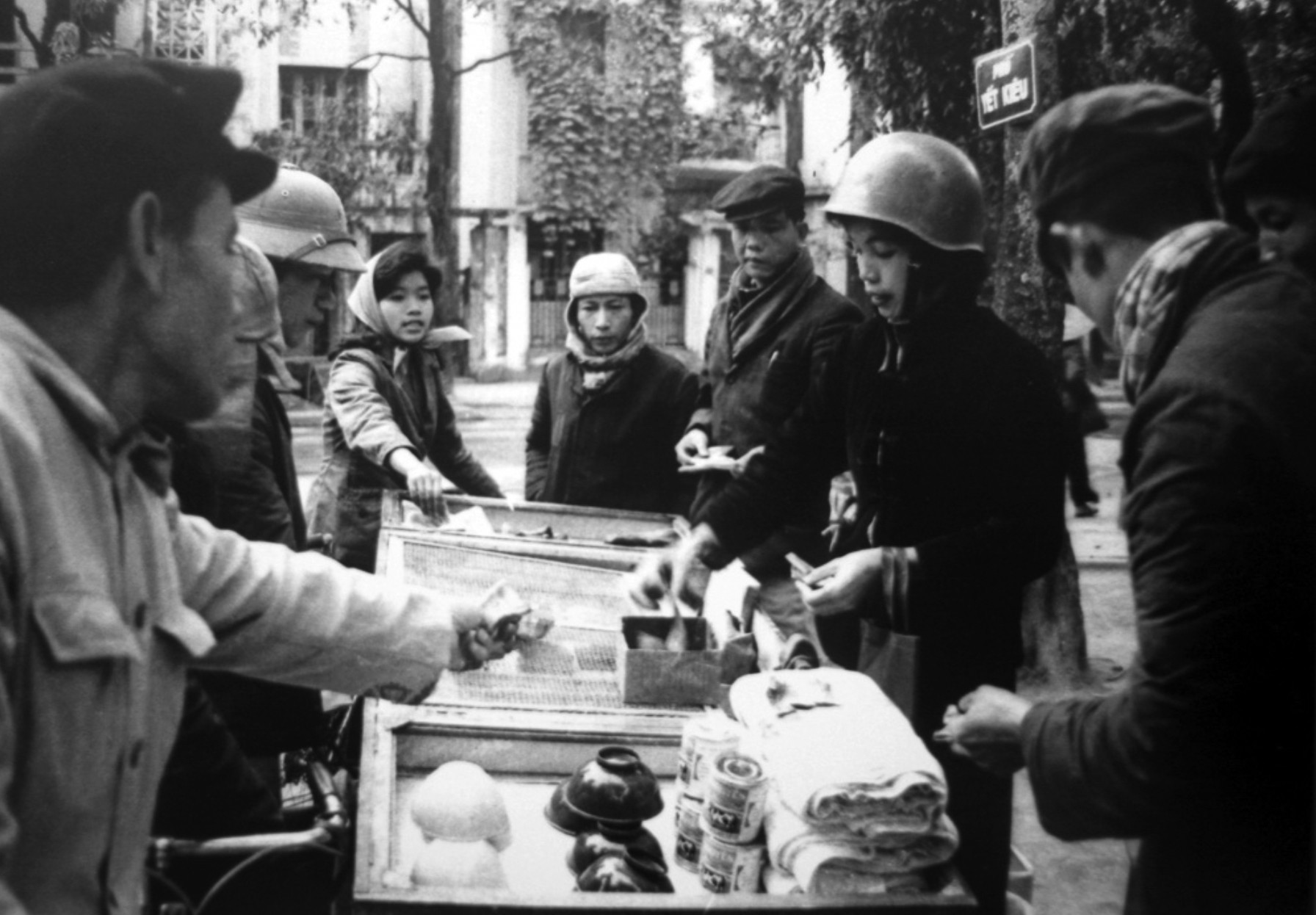
At 6:50 p.m. on December 18, 1972, the Air Defense - Air Force Command was placed on Level 1 combat readiness. By 7:10 p.m., Radar Company 16 detected B-52 jamming signals. Shortly after, at 7:15 p.m., Regiment 291 confirmed the presence of B-52s and reported: "B-52s are entering the North."
The Operations Department devising plans to protect Hanoi's airspace and defeat B-52 bombers in 1972. (Photo: VNA)

On the morning of December 18, 1972, the Prime Minister's Office issued directives to ministries, agencies, and localities: "The enemy may bomb Hanoi and Hai Phong; the city's evacuation plan must be well-implemented."
General Van Tien Dung listens to the Air Defense - Air Force Command's final report on the plan to fight B-52 bombers, November 24, 1972. (Photo: VNA)

At 7:25 p.m. on December 18, 1972, the Vietnamese Air Force received orders to take off and intercept enemy tactical aircraft formations. (Photo: VNA)

At 7:44 p.m., the first missile from Battalion 78 of Missile Regiment 257 was launched—the 12-day and night battle of the three-tiered air defense forces to protect Hanoi had begun. (Photo: Archive)

Hanoi residents began evacuating to the countryside to avoid bombings. They organized observation posts, alarms, evacuations, dug trenches and shelters, and coordinated with police and citizens to ensure security and protect property. (Photo: VNA)

Militiawoman Dang Thi Ty (Dan Phuong Commune) on duty at the Phung Dam defense position. (Photo: VNA)

Teachers at Dịch Vọng Secondary School, Tu Liem, guided students in weaving straw hats to prevent injuries from cluster bombs. (Photo: Archive)

Dịch Vọng Secondary School prepares shelters and welcomes evacuated students from other areas. (Photo: VNA)

Hanoi residents lived beside bomb shelters during the days when B-52s bombed the city. (Photo: VNA)

Mobile vendors during the 12-day "Dien Bien Phu in the Air" campaign.

A devastated section of Kham Thien Street after bombings. (Photo: VNA)

Wreckage of a B-52 bomber shot down on Hoang Hoa Tham Street on December 27, 1972. (Photo: Archive)

On the night of December 18 and early morning of December 19, 1972, the U.S. deployed 90 B-52 sorties to drop bombs in three waves over Hanoi, interspersed with 8 F-111 sorties and 127 tactical aircraft sorties, dropping approximately 6,600 bombs on 135 locations in Hanoi, including 85 residential areas, resulting in 300 civilian deaths. Our army and people bravely fought back, shooting down 6 aircraft, including 3 B-52s (2 crashed on the spot).
The U.S. imperialists conducted two consecutive destructive wars against North Vietnam, culminating in the strategic air raid at the end of December 1972, hoping to "bomb North Vietnam back to the Stone Age."
During 12 days and nights, the U.S. intended to turn Hanoi into a battlefield for a final showdown, believing victory was assured. However, all those calculations were completely overturned.
The army and people of Hanoi, Hai Phong, and several northern localities closely coordinated with armed forces to completely defeat the unprecedented large-scale strategic air raid by the U.S., achieving a brilliant victory.
In December 1972, under the leadership of the Party, our army and people defeated the strategic air raid using "super fortresses" B-52s over Hanoi's skies, forcing the U.S. to sign the Paris Agreement on ending the war and restoring peace in Vietnam.
This created a turning point in the resistance war against the U.S., leading to complete victory.
Hoang Ha